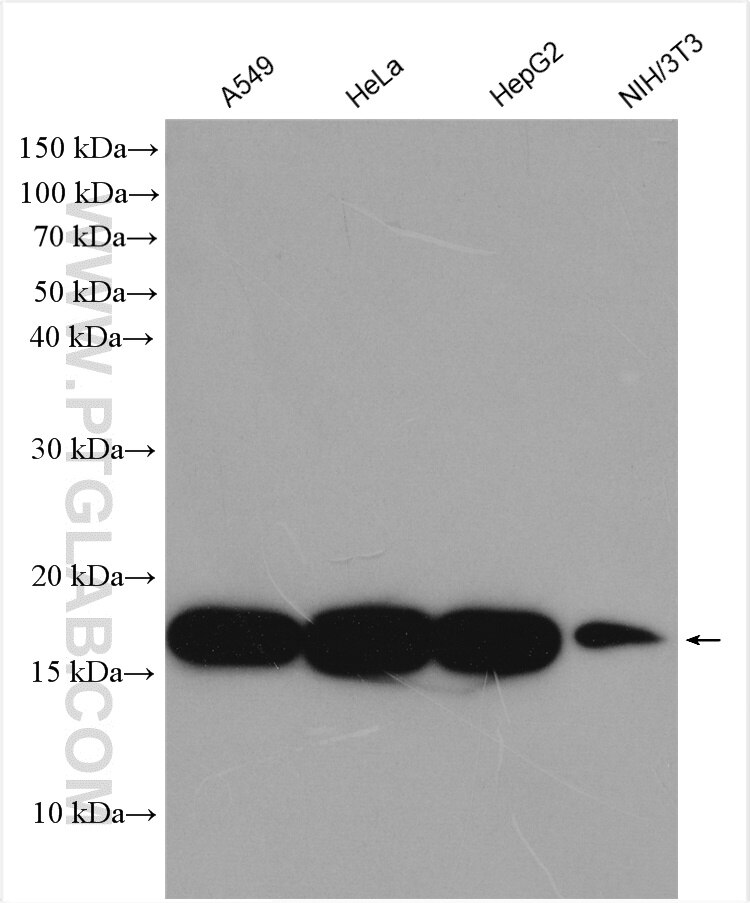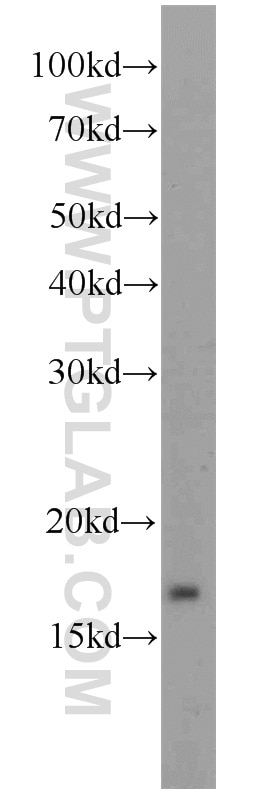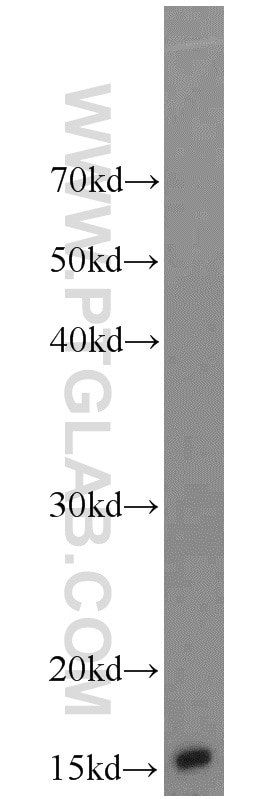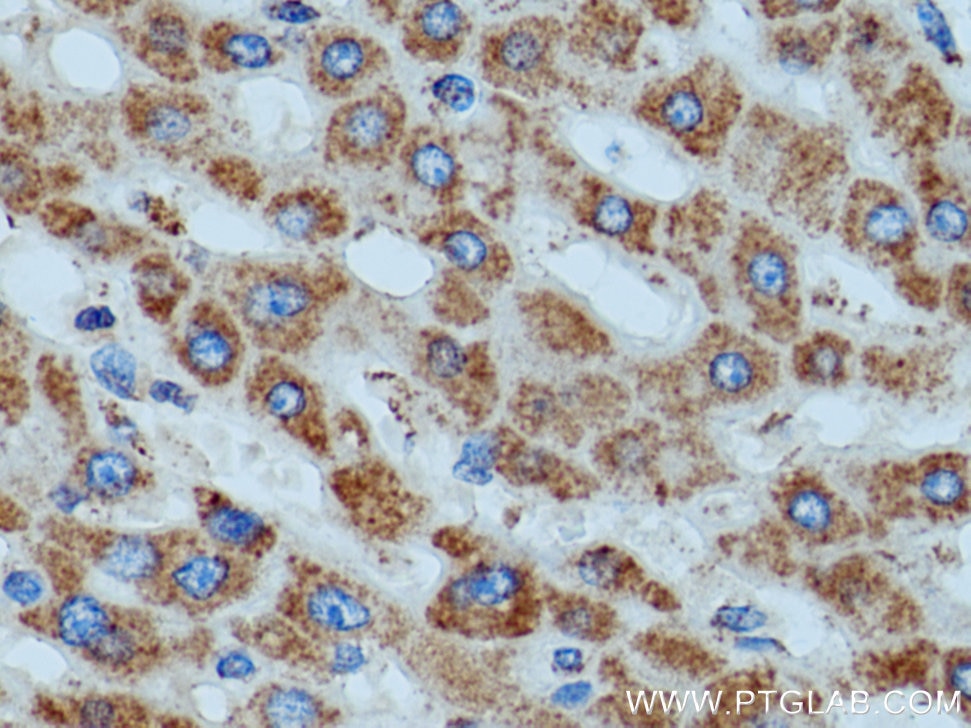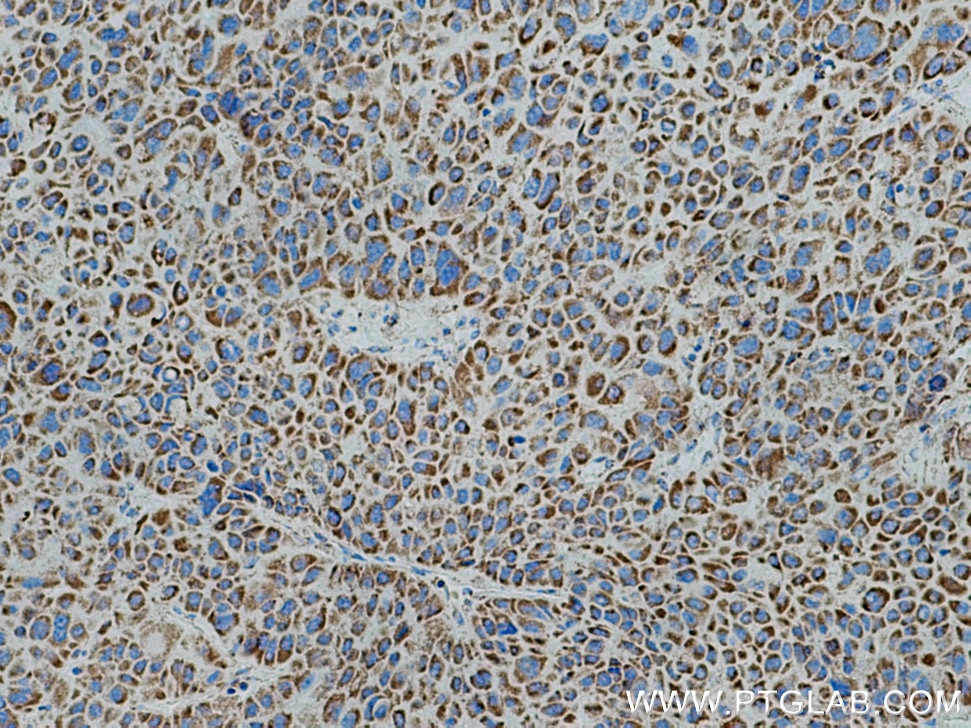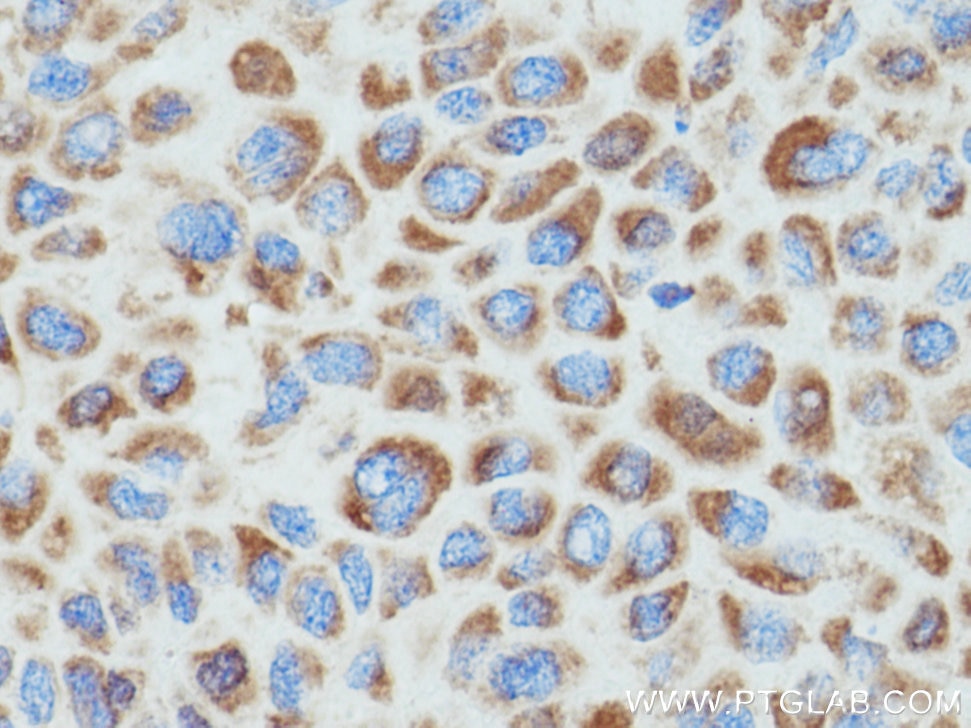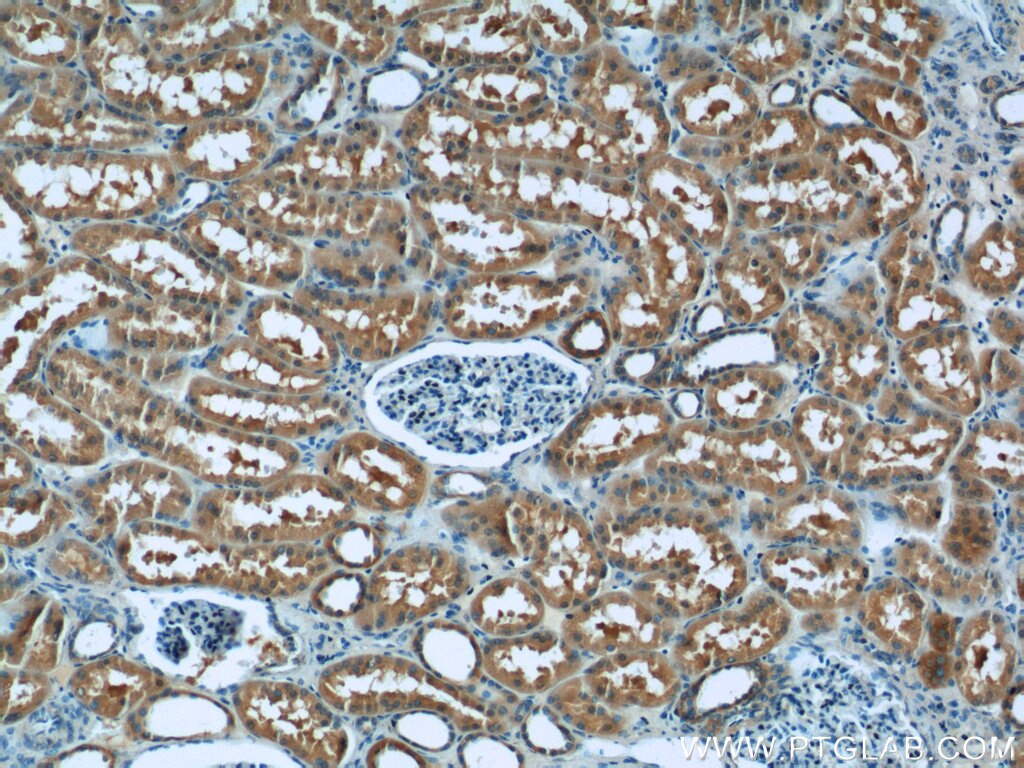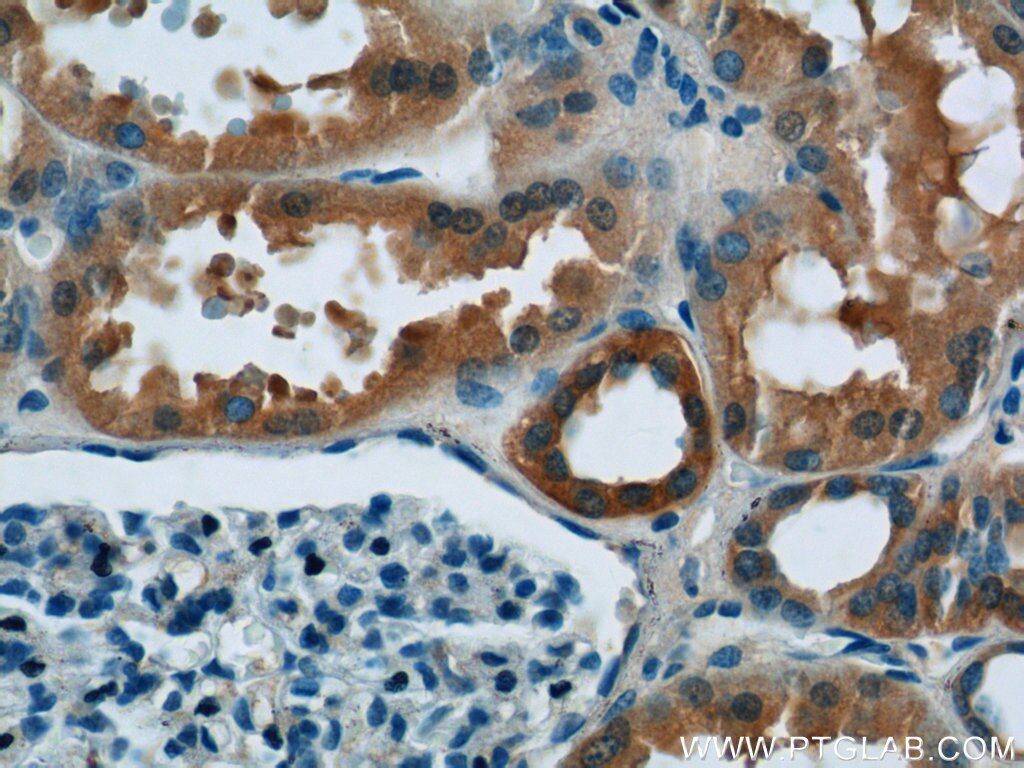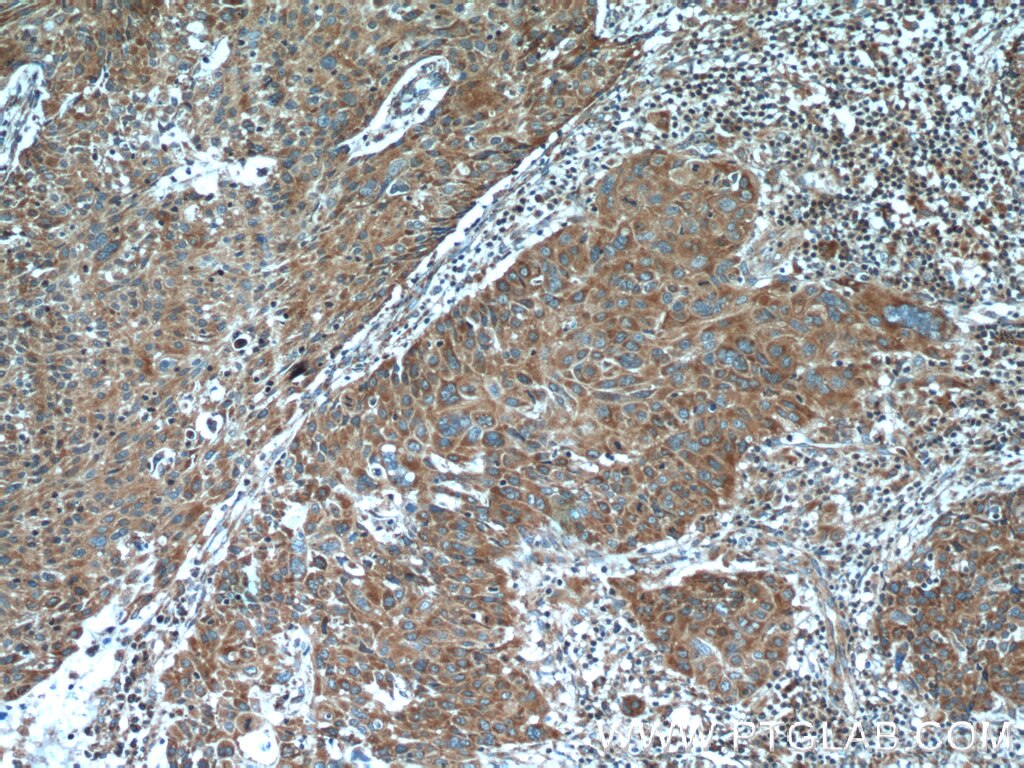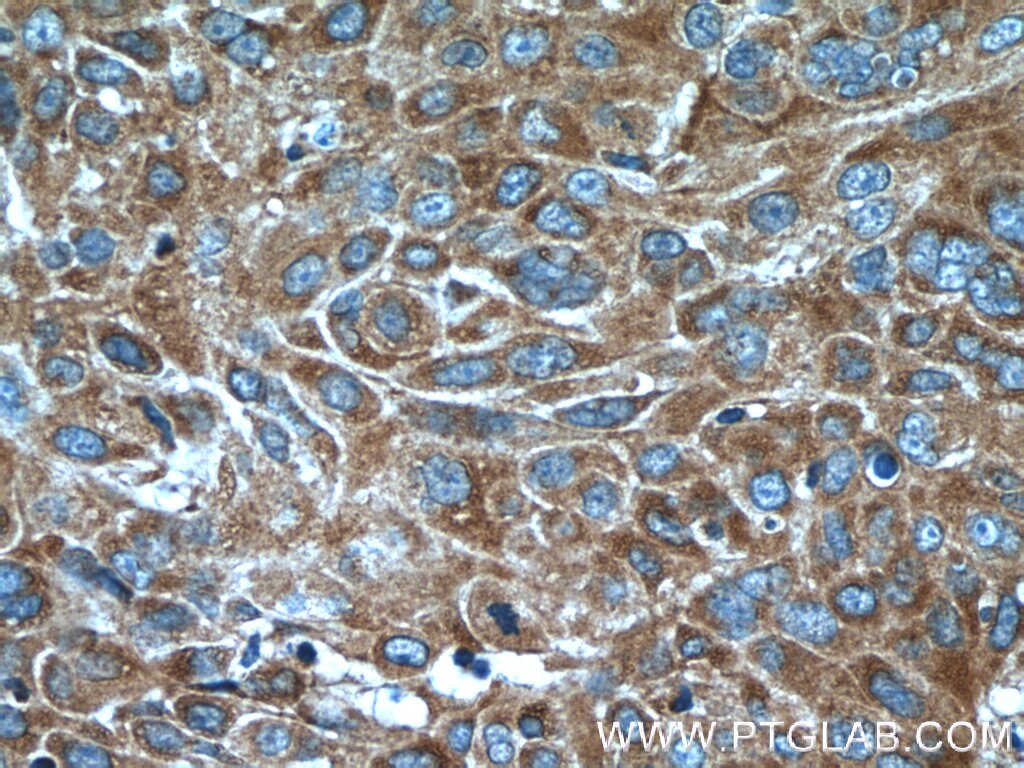ATP5D Polyklonaler Antikörper
ATP5D Polyklonal Antikörper für WB, IHC, ELISA
Wirt / Isotyp
Kaninchen / IgG
Getestete Reaktivität
human, Maus
Anwendung
WB, IHC, IF, ELISA
Konjugation
Unkonjugiert
Kat-Nr. : 14893-1-AP
Synonyme
Geprüfte Anwendungen
| Erfolgreiche Detektion in WB | A549-Zellen, HeLa-Zellen, HepG2-Zellen, NIH/3T3-Zellen |
| Erfolgreiche Detektion in IHC | humanes Leberkarzinomgewebe, humanes Nierengewebe, humanes Lungenkarzinomgewebe Hinweis: Antigendemaskierung mit TE-Puffer pH 9,0 empfohlen. (*) Wahlweise kann die Antigendemaskierung auch mit Citratpuffer pH 6,0 erfolgen. |
Empfohlene Verdünnung
| Anwendung | Verdünnung |
|---|---|
| Western Blot (WB) | WB : 1:1000-1:4000 |
| Immunhistochemie (IHC) | IHC : 1:200-1:600 |
| It is recommended that this reagent should be titrated in each testing system to obtain optimal results. | |
| Sample-dependent, check data in validation data gallery | |
Veröffentlichte Anwendungen
| WB | See 8 publications below |
| IF | See 1 publications below |
Produktinformation
14893-1-AP bindet in WB, IHC, IF, ELISA ATP5D und zeigt Reaktivität mit human, Maus
| Getestete Reaktivität | human, Maus |
| In Publikationen genannte Reaktivität | human, Maus |
| Wirt / Isotyp | Kaninchen / IgG |
| Klonalität | Polyklonal |
| Typ | Antikörper |
| Immunogen | ATP5D fusion protein Ag6682 |
| Vollständiger Name | ATP synthase, H+ transporting, mitochondrial F1 complex, delta subunit |
| Berechnetes Molekulargewicht | 17 kDa |
| Beobachtetes Molekulargewicht | 15-17 kDa |
| GenBank-Zugangsnummer | BC002389 |
| Gene symbol | ATP5D |
| Gene ID (NCBI) | 513 |
| Konjugation | Unkonjugiert |
| Form | Liquid |
| Reinigungsmethode | Antigen-Affinitätsreinigung |
| Lagerungspuffer | PBS with 0.02% sodium azide and 50% glycerol |
| Lagerungsbedingungen | Bei -20°C lagern. Nach dem Versand ein Jahr lang stabil Aliquotieren ist bei -20oC Lagerung nicht notwendig. 20ul Größen enthalten 0,1% BSA. |
Hintergrundinformationen
The mitochondrial F1Fo-ATP synthase complex uses energy derived from a proton gradient to synthesize ATP. The ATP5D gene encodes the delta subunit of the mitochondrial ATP synthase F1 complex and belongs to the ATPase epsilon chain family. This gene encode the full length protein of 17 kDa with a transit peptide of 22 amino acid.
Protokolle
| PRODUKTSPEZIFISCHE PROTOKOLLE | |
|---|---|
| WB protocol for ATP5D antibody 14893-1-AP | Protokoll herunterladen |
| IHC protocol for ATP5D antibody 14893-1-AP | Protokoll herunterladenl |
| STANDARD-PROTOKOLLE | |
|---|---|
| Klicken Sie hier, um unsere Standardprotokolle anzuzeigen |
Publikationen
| Species | Application | Title |
|---|---|---|
Theranostics AdMSC-derived exosomes alleviate acute lung injury via transferring mitochondrial component to improve homeostasis of alveolar macrophages. | ||
Int J Mol Sci CA9 Silencing Promotes Mitochondrial Biogenesis, Increases Putrescine Toxicity and Decreases Cell Motility to Suppress ccRCC Progression. | ||
Front Aging Neurosci Hippocampus-Based Mitochondrial Respiratory Function Decline Is Responsible for Perioperative Neurocognitive Disorders. | ||
Am J Physiol Cell Physiol 3-MST/H2S protects cerebral endothelial cells against OGD/R-induced injury via mitoprotection and inhibition of the RhoA/ROCK pathway. | ||
J Neuropathol Exp Neurol Altered Mitochondria, Protein Synthesis Machinery, and Purine Metabolism Are Molecular Contributors to the Pathogenesis of Creutzfeldt-Jakob Disease. | ||
Cell Death Dis Nitric oxide triggers the assembly of "type II" stress granules linked to decreased cell viability. |
